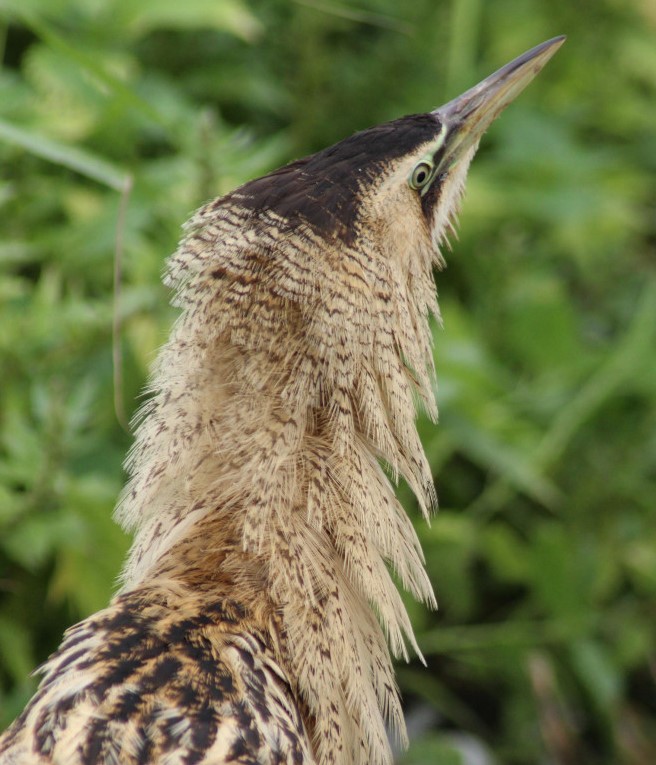
(Vicky Buckel)
An update on our rehab Bittern
Back in September 2016, a juvenile female Bittern that had been in care after an accident was released at Rye Meads with one of our rings on it. The story of this is recounted in a Bittern comes out of rehab.
Conventionally, birds are ringed on the right leg, but with this bird – something of a handful! – it was easiest to ring on the left leg. This actually proved to be a good move, as there have been several subsequent sightings of a left leg ringed Bittern!
Alan Harris provides the latest news on her story.
This young female Bittern had dispersed from wherever it had been bred and the inexperience of youth had landed it in trouble. Following her release we know she spent the winter of 2016-17 at Rye Meads or nearby thanks to Jay Ward’s conclusive photograph of the ring recording the number on 22 February 2017. However she did not remain to summer at Rye Meads, but interestingly a left-leg ringed Bittern was photographed by Marcus Nash at Lakenheath RSPB in the summer of 2017. So few bitterns are ringed in the UK that the fact that the bird was ringed on the left leg was intriguing.
Almost certainly she was back in the Lee valley near Rye Meads RSPB in the winter of 2017-18 where a left-leg ringed Bittern was once again seen and photographed at Amwell in November (but the ring number was not obtained), before the trail led once more to Lakenheath. Almost two years after ringing, a bittern with a ring on its left leg was seen and photographed from Mere Hide at RSPB Lakenheath Fen on 7 May 2018 by Dawn Balmer from the BTO. The bird was then photographed by local photographer David Gowing on 20 May 2018 when the all important ring number was verified. She again wintered at Amwell and in June 2020 was photographed once more at Lakenheath RSPB.
Since then what is undoubtedly this bird has returned each autumn to winter at Amwell, sometimes as early as late July and the latest news is that she is showing well at Amwell once again (August 2022). And once more can I throw out the challenge to photographers to get verification of the ring number –some of it will probably do!
We know almost nothing about these secretive birds’ movements, but RSPB research has revealed that young birds disperse from their home reedbed but often return if they find nowhere better, and that males, once breeding, are sedentary, but what little we know of adult females suggests that some at least may migrate to a regular wintering ground, to return each year to their breeding reedbed in the spring. Thus the sexes don’t compete for food during the winter months when fishing may be difficult.
So it seems entirely possible that this bird may have originally been reared at Lakenheath RSPB. That she uses two reserves in this way indicates the scarcity of this reedbed habitat and the importance of the network of reedbed reserves which has enabled the Bittern to make a spectacular come back over the last decade.
The skills of the people at Wildlife Welfare, the value of bird ringing, and the importance of creating and maintaining scarce habitats have all come together to reveal this fascinating story – not forgetting the amazing work of the photographers – and a little bit of intuitive detective work!
